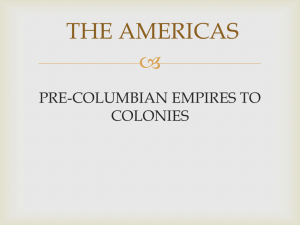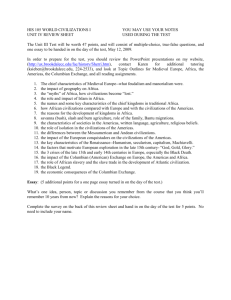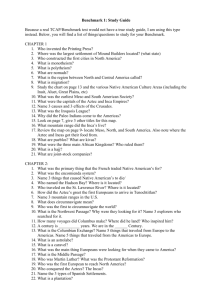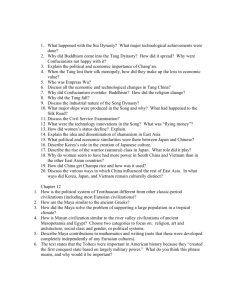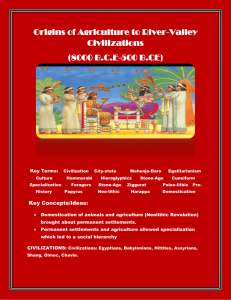Ch11 INCA PT 2
advertisement
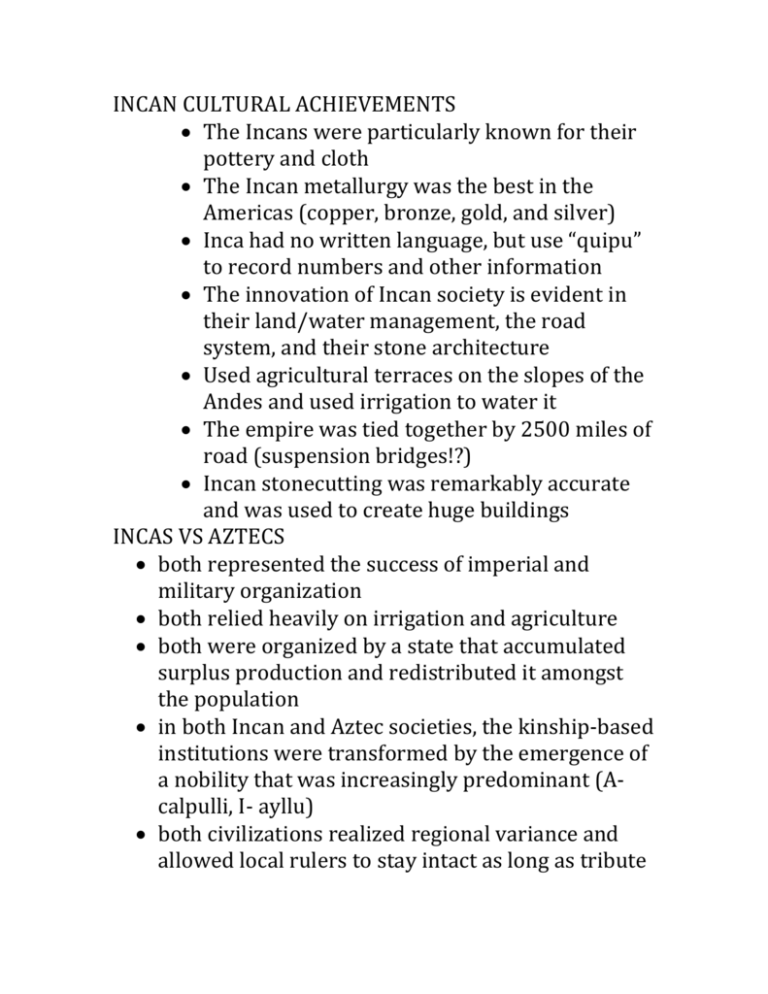
INCAN CULTURAL ACHIEVEMENTS The Incans were particularly known for their pottery and cloth The Incan metallurgy was the best in the Americas (copper, bronze, gold, and silver) Inca had no written language, but use “quipu” to record numbers and other information The innovation of Incan society is evident in their land/water management, the road system, and their stone architecture Used agricultural terraces on the slopes of the Andes and used irrigation to water it The empire was tied together by 2500 miles of road (suspension bridges!?) Incan stonecutting was remarkably accurate and was used to create huge buildings INCAS VS AZTECS both represented the success of imperial and military organization both relied heavily on irrigation and agriculture both were organized by a state that accumulated surplus production and redistributed it amongst the population in both Incan and Aztec societies, the kinship-based institutions were transformed by the emergence of a nobility that was increasingly predominant (Acalpulli, I- ayllu) both civilizations realized regional variance and allowed local rulers to stay intact as long as tribute is paid, and sovereignty remained with the Inca/Aztec both realized that their militaries were less effective against the nomadic people living on the frontiers while they were similar in certain aspects, they were obviously different in terms of geography and climate there were also differences in their metallurgy, their writing systems, and their social hierarchies OTHER PEOPLES OF THE AMERICAS How many people? More likely than not, the Native American population in 1492 was around 70 million Out of 500 million, that makes them very important Differing Cultural Patterns: Northern South America served as a “buffer zone” for the Inca and the Aztec Similar, but smaller, civilizations formed along the Amazon River The Arawaks from Hispaniola were a sedentary agriculture group Some civilizations combine agriculture with hunting/gathering Unlike Europe and Asia, the Americas lacked nomadic herders The differences between civilizations were most apparent in North America by 1500, there are over 200 languages being spoken In other Indian civilizations, women held important roles in politics and in social roles while at the same time remaining subordinate to men Each civilization developed differently according to their ecological circumstance Natives tended to view themselves as “part of the environment” and not necessarily as “in control” of it AMERICAN DIVERSITY IN WOLD CONTEXT Inca and Aztec are both limited with their technology The Americas contain a spectrum of civilizations many different civilizations in terms of size, location, culture, etc. Religion played a significant role in determining the relationships between individual and society as well as individual and environment The isolation of the Americas from Europe was KEY in the development of civilizations there. That isolation is evident in the absence of technology (plow, wheel), the lack of domesticated animals, and the lack of world religions That isolation ended in 1492….



